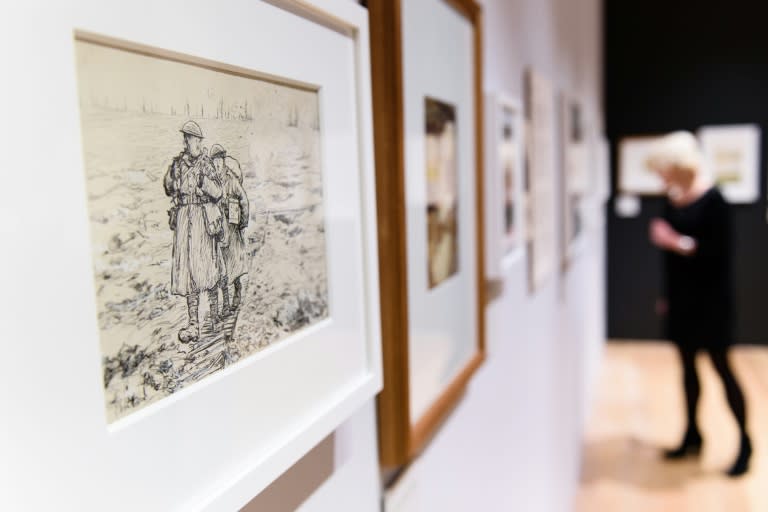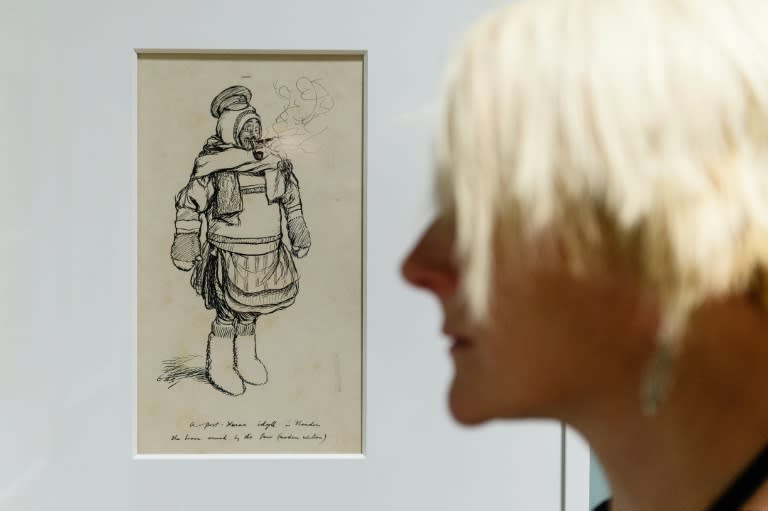Winnie-the-Pooh illustrator's WWI sketches revealed
The World War I illustrations of E.H. Shepard, the artist who brought Winnie-the-Pooh to life, go on display for the first time Friday, revealing scenes of devastation that completely contrast with Pooh's idyllic surroundings. Ernest Howard Shepard is the best-known British illustrator of the 20th century thanks to his drawings of Pooh Bear and his chums, including Eeyore, Tigger and Christopher Robin. His wartime artillery service at some of the Western Front's bloodiest battles, during which he drew precise combat zone panoramas and sent satirical sketches from the front line back to Punch magazine, was overshadowed by his later success. Nonetheless, the instinctive gentle humour he brought out in Pooh and his pals is evident in his World War I illustrations -- a welcome distraction from life firing munitions on the Front. "We've got never-before-exhibited works from Shepard from a period of his life that people just don't know about," said Colin McKenzie, director of the House of Illustration gallery in London. "They give a real insight into daily life during that period through his beautifully-observed sketches," he told AFP. One illustration shows soldiers merrily chatting amidst the wreckage of a French village, another British "Tommies" refusing to hurry as shells explode around them, in which the caricatured faces lighten the horrors of the scene around them. His light-filled watercolours of his sleeping quarters, like his letters home to his wife Florence, never betray the misery endured on the front line. "His sign-off is depicting himself as a little mouse fast asleep in bed," McKenzie said. The English rural idyll Shepard evoked in his drawings for A. A. Milne's series of Pooh books -- and for Kenneth Grahame's children's novel "The Wind in the Willows" -- is the antidote to the devastated landscapes he depicted during the Great War. "There's no doubt it's a reaction to what he saw in France," McKenzie said. - Wartime works eclipsed by Pooh - Shepard was an established cartoonist and illustrator who, at the age of 36, volunteered to become a Royal Artillery officer in 1915. Using his artist's judgement of scale and distance, Shepard's drawings helped the artillery direct fire on enemy positions, shelling he was involved in. The exhibition includes a 1.5 metre (five-foot) long topographical drawing of the Asiago plateau in northern Italy, circa 1917-1918, a detailed pencil panorama for military use. Shepard fought with the 105th Siege Battery at the Somme, Arras and Passchendaele, three of the major battles of the war. He won a Military Cross medal for his gallantry in charge of a battery. A versatile artist, his World War I satirical depictions of front line life were soon eclipsed by his political cartoons for Punch, where he worked until 1953. But when Walt Disney brought out the Winnie-the-Pooh films in the late 1960s, his depiction of the silly old bear's universe -- originally done in the 1920s -- brought him global fame. The world record price for a book illustration was set last December when a bidder paid £314,000 ($480,000, 427,000 euros) for an original Shepard ink drawing depicting the bear and Christopher Robin playing "poohsticks". "E.H. Shepard: An Illustrator's War" runs until January 24.




